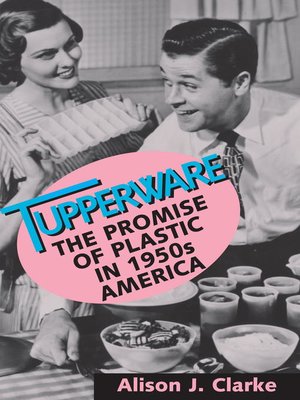
Sign up to save your library
With an OverDrive account, you can save your favorite libraries for at-a-glance information about availability. Find out more about OverDrive accounts.
Find this title in Libby, the library reading app by OverDrive.



Search for a digital library with this title
Title found at these libraries:
| Library Name | Distance |
|---|---|
| Loading... |
From Wonder Bowls to Ice-Tup molds to Party Susans, Tupperware has become an icon of suburban living. Tracing the fortunes of Earl Tupper's polyethylene containers from early design to global distribution, Alison J. Clarke explains how Tupperware tapped into potent commercial and social forces, becoming a prevailing symbol of late twentieth-century consumer culture.
Invented by Earl Tupper in the 1940s to promote thrift and cleanliness, the pastel plasticwares were touted as essential to a postwar lifestyle that emphasized casual entertaining and celebrated America's material abundance. By the mid-1950s the Tupperware party, which gathered women in a hostess's home for lively product demonstrations and sales, was the foundation of a multimillion-dollar business that proved as innovative as the containers themselves. Clarke shows how the “party plan” direct sales system, by creating a corporate culture based on women's domestic lives, played a greater role than patented seals and streamlined design in the success of Tupperware.
Invented by Earl Tupper in the 1940s to promote thrift and cleanliness, the pastel plasticwares were touted as essential to a postwar lifestyle that emphasized casual entertaining and celebrated America's material abundance. By the mid-1950s the Tupperware party, which gathered women in a hostess's home for lively product demonstrations and sales, was the foundation of a multimillion-dollar business that proved as innovative as the containers themselves. Clarke shows how the “party plan” direct sales system, by creating a corporate culture based on women's domestic lives, played a greater role than patented seals and streamlined design in the success of Tupperware.







